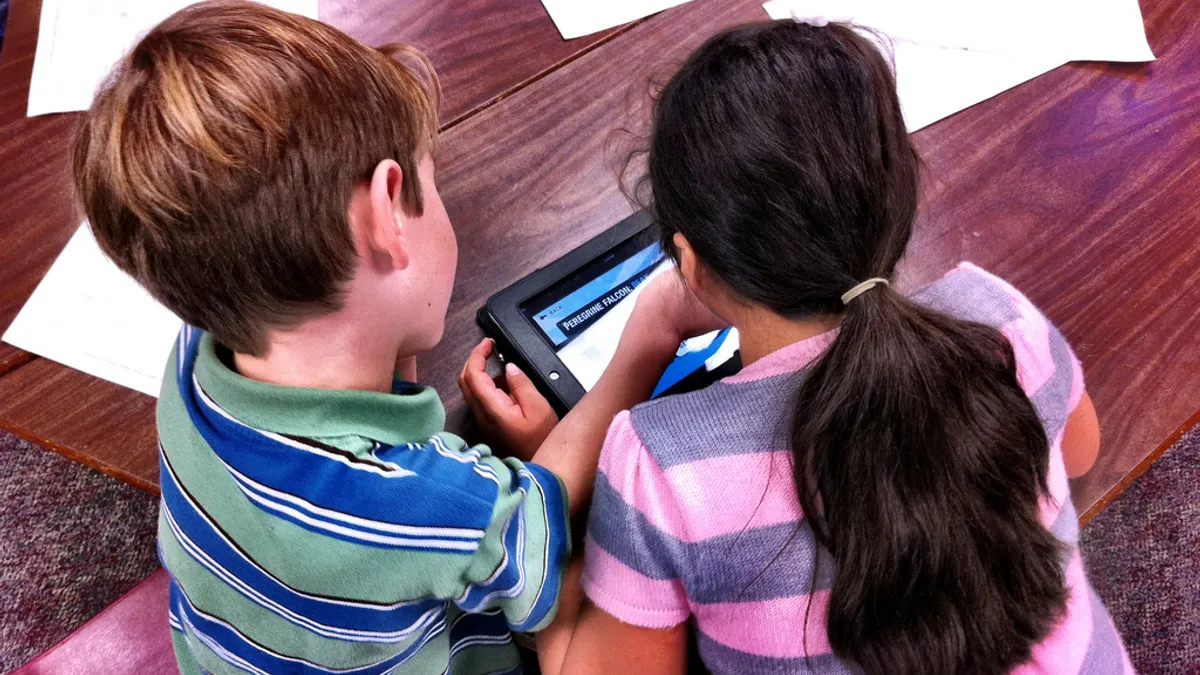Social connectedness has proven benefits for a student’s well-being and directly impacts the success of their learning outcomes, according to a new study by Instructure. In face-to-face classrooms, students and teachers have a wealth of opportunities for authentic interactions that foster connectedness. As more and more teachers begin to use online technology to enhance or even replace the face-to-face experience, they risk losing that sense of humanness. The challenge lies in striking a balance; educational technology can best serve digital instruction by offering capabilities native to face-to-face learning.
Peer Tutoring
Students in a peer tutoring environment score as well as or better than 66% of untutored students on exams.
In peer tutoring, students help other students through structured learning activities where they are accountable to each other. Peer tutoring is a student-centered activity, but it doesn’t begin with the student—it begins with the teacher modeling reflective knowledge-building and showing students how to monitor their own understanding, correct misunderstandings, and elaborate on known materials. Research shows that through peer tutoring, students gain a better understanding of materials and develop more positive attitudes toward their work; this peer learning activity produces a moderate, positive effect on test performance.
Canvas LMS was designed to encourage interactions between students as a way to enable connected, interactive peer learning. Its student-centered design grants students many of the same capabilities as teachers within their course spaces. For peer tutoring, this means the tutor and the tutored can assume equal responsibilities and organize sessions in ways that work best for both. For example, schools can create a tutoring "course" in Canvas where some students are enrolled with teacher-like privileges to serve as mentors. Other students can drop into a digital course and receive tutoring help as needed. In Canvas, such tutoring can be synchronous, via live web Conferences or Chat, or it can be asynchronous through Discussions.
Reciprocal Teaching
Students engaged in reciprocal teaching score as well as or better than over 80% of students in traditional learning environments on assessments.
Reciprocal teaching puts students in the driver's seat. It empowers students to take control of their own learning, to thoroughly understand the content, and to open up a dialogue with their peers. Commonly applied in small group reading sessions, reciprocal teaching gives each student the opportunity to master a topic and to conduct class just as the teacher would. In practicing reciprocal teaching, a student works on:
- Summarizing content for other students, requiring their own mastery of the topic
- Generating important questions, prompting other students to discuss deeply
- Providing clarification to students, and thus becoming the topic expert
- Making predictions about content, making and testing their own conclusions
Whether teachers organize students into groups with a group leader, or want a student to teach to the entire class, Canvas lets students initiate and facilitate reciprocal teaching. The most flexible tool is the tried-and-true Canvas Discussions forum, which allows students to initiate and facilitate online class dialogue.
Canvas and Cooperative Learning
Students working in collaborative learning environments score as well as or better than 75% of students in competitive and individualistic learning environments on exams.
Small group work supplements teacher instruction with goal-driven topic discussions, skills practice and research, and makes students accountable to each other. This kind of collaborative learning improves students’ individual and group learning. Cooperative learning improves student outcomes, such as:
- Motivation to learn
- Intergroup/interpersonal relations
- Engagement in activities
- Attitude toward school
Canvas facilitates cooperative learning by giving students the tools they need to work out strategies, set milestones for projects, solve problems, draft documents, and share multimedia synchronously and asynchronously—all within the framework of learning goals and with the support of teacher guidance. For example, Canvas Collaborations makes collaborative note-taking possible. It’s a convenient, common work space to keep track of collaborative activities without the hassle of exchanging email addresses. Collaborations also integrates with other collaborative tools like Google Docs and EtherPad, enabling multiple users to work together on the same document at the same time.
Summary
The fact that people, even in their roles as students and teachers, seek out meaningful interactions and a feeling of connection should come as no surprise. In an era when instructors have felt separated from their students because of the technology gap, Canvas has made strides in connecting instructors to their students and creating learning communities through technology.
To see the full white paper, visit https://www.canvaslms.com/downloads/Increased-Social-Connectedness.pdf





 Dive Awards
Dive Awards




